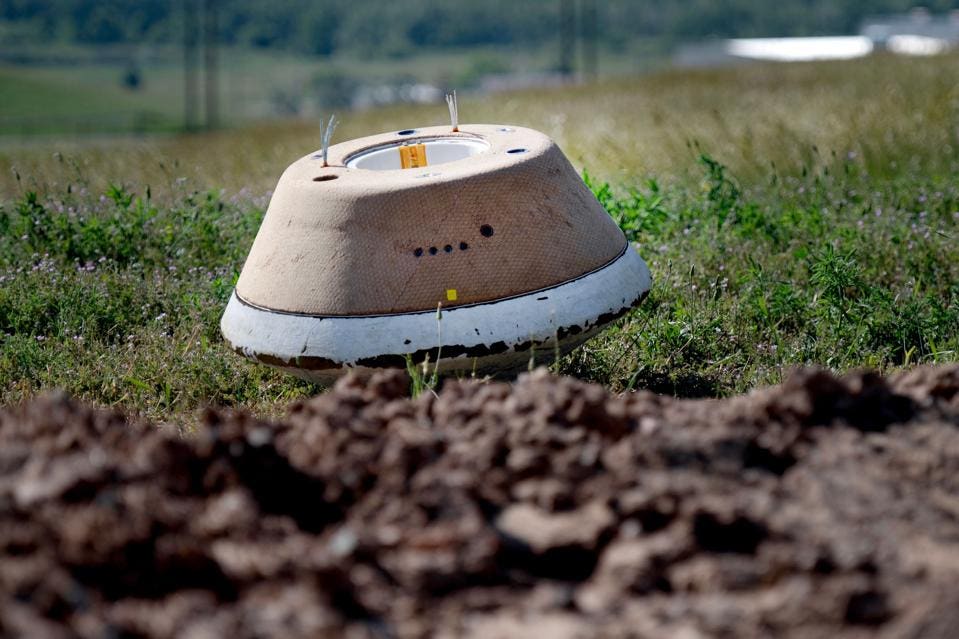A NASA explorer spacecraft returned to Earth Sunday morning after nearly seven years spent in space on the OSIRIS-REx mission to collect pieces of the carbon-rich asteroid Bennu, which scientists say may help unlock the secrets of the solar system’s origins and solve the mystery of how life began.

Key facts
- The unmanned pod that was first sent into space in 2016 landed safely about 80 miles west of Salt Lake City Sunday morning and brought with it pieces of Bennu, making the mission NASA’s first to successfully collect a sample from an asteroid.
- It took scientists a year after the spacecraft first reached the asteroid in 2018 to map it in detail and find a safe sample collection site, and scientists say the pieces gathered on the mission will give them more information about how life began, how the early solar system formed and how asteroids could impact Earth in the future.
- Though Bennu is roughly 50 million miles away, NASA counts it as a “near-Earth asteroid” and has said it could be made of the same molecules that were present when life first formed on Earth.
- Scientists have said they believe water once flowed on Bennu’s parent body and while there’s no atmosphere on the asteroid, it does “have a lot of the factors that make a place technically habitable.

Key background
Scientists have been working on missions to collect asteroid dust for almost two decades, but NASA rejected the first two project proposals because of budget and other concerns. NASA’s OSIRIS-REx was finally selected in 2011 and preparations began.
Scientists first discovered Bennu in 1999 and have been collecting data on it ever since. The asteroid has been undisturbed for billions of years and NASA has said it is thought to have formed in the first 10 million years of the solar system’s history—over 4.5 billion years ago.
Because it has been preserved in the vacuum of space, it could still have the early life-forming molecules that have long disappeared from Earth.
OSIRIS-REx launched in 2016, flew by earth in 2017 and arrived on Bennu on Dec. 3, 2018. It began its journey back to Earth more than two years ago.
Big number
1-in-2,700. That’s how likely it is that Bennu could impact Earth between the years 2175 and 2199.
That calculation will be re-examined when Bennu passes closer to earth in 2135.
What to watch for
The next asteroid mission. OSIRIS-REx will be renamed OSIRIS-APophis EXplore and be redirected to the asteroid Apophis when it passes near Earth in 2029.
Apophis is expected to pass within 20,000 miles of Earth that year, almost 12 times closer than the moon.
This article was first published on forbes.com and all figures are in USD.


